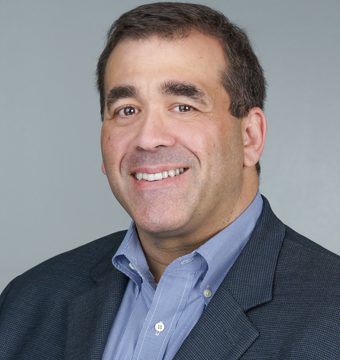Mike Puglia, Chief Security Officer & GM of Security Products, at the IT management software company Kaseya, pictured, discusses how MSPs can drive efficiencies through 2022 and beyond.
The COVID-19 pandemic has had a significant effect on the activities of managed service providers (MSPs) the world over. It created opportunities for them as SMBs had to go remote and depend on MSPs to stay in business. That reliance has carried on into the post pandemic world and will continue, creating ongoing opportunities for MSPs.
For many though, the opportunities have dominated. As the pandemic tightened its grip, companies upgraded their IT infrastructure by adopting cloud-based and digital tools to stay competitive. Often this meant turning to outside resources, particularly for IT support. Accordingly, many MSPs saw their business grow.
More than half (51pc) of the respondents to Kaseya’s 2022 MSP Benchmark Survey, which polled more than 1,200 MSPs across the globe said COVID-19 enabled them to increase their ability to expand services within their client base, while 62pc said it led to an increase in their overall monthly recurring revenue (MRR). Nearly half of the MSP respondents reported monthly recurring revenue growth above 10pc because of these favourable factors.
Security reigns supreme
Top of mind for many MSPs as we stand on the cusp of post-pandemic age is the cyber-security landscape. According to the survey – 50pc said their business is more at risk from cyber-crime compared to one year ago, which is an 11pc increase from 2021’s data. But this challenge is also an opportunity. Over 95pc of respondents told Kaseya their clients turned to them for advice on cyber-security plans and best practices in 2021.
This figures are unsurprising. Cyber-security is an increasingly urgent concern for those small to medium-sized businesses (SMBs) that make up the lion’s share of most MSPs clients lists. The remote and hybrid work environment has made it easier for cyber-criminals of all stripes to exploit vulnerable companies. SMBs make an attractive target because they lack a solid security framework and often do not have the right resources and knowledge in place to build one. Furthermore, their technicians often experience burnout due to working longer hours monitoring for incidents on top of handling the usual IT tasks.
All the evidence suggests that cyber-security will continue to be a grim topic for the SMB community moving forward. Among the MSP respondents surveyed, 73pc said up to 20pc of their clients experienced at least one cyber-attack in the past 12 months. This trend is consistent with 2021 survey responses.
It is evident though that cyber-crime is hitting more businesses. The percentage of respondents who said between 21pc and 40pc of their clients had experienced at least one cyber-attack jumped from 13pc to 21pc.
Putting the spotlight on BCDR
Business continuity and disaster recovery (BCDR) is another key focus. Due to the increasing complexity of IT environments and the cyber-threat landscape, IT professionals are instructed to test their disaster recovery capabilities regularly. Kaseya’s 2022 survey found 30pc of MSPs simulate disaster recovery capabilities quarterly, 25pc test annually and 9pc test monthly – with 15pc admitting that they never test at all.
Remote work has also provided a wealth of opportunities for MSPs to look to capitalise on. That’s because it is seen as a significant pain point for MSPs’ customers, with 36pc of respondents selecting it as one of the top three IT problems for clients in 2022.
Finding a solution
The topics outlined above are increasingly areas of focus for MSPs and their customers. MSPs are therefore increasingly offering these services to their customers in a bid to drive revenue growth. It is a trend likely to continue through 2022 and beyond. In delivering these services, efficiency will remain key. According to the Kaseya research, it continues to be a top priority for MSPs, with 96pc of respondents agreeing that integrating core technologies improves operational efficiency. Ultimately, the challenges and opportunities outlined above can best be addressed through IT solutions and services that deliver application integration and operational efficiencies.
MSPs can win more customers by offering strong cybersecurity and compliance services as well as impressive customer support. As MSPs onboard more clients, they must streamline their operations to drive operational efficiency while also lowering costs.
Integration between critical business tools, such as remote monitoring and management, PSA solutions and IT documentation, will help them accomplish this. As a whole, the state of the MSP market remains strong and the outlook looks promising. With careful planning and foresight, MSPs can overcome obstacles and carve out a niche for themselves through the remainder of 2022 and beyond.










